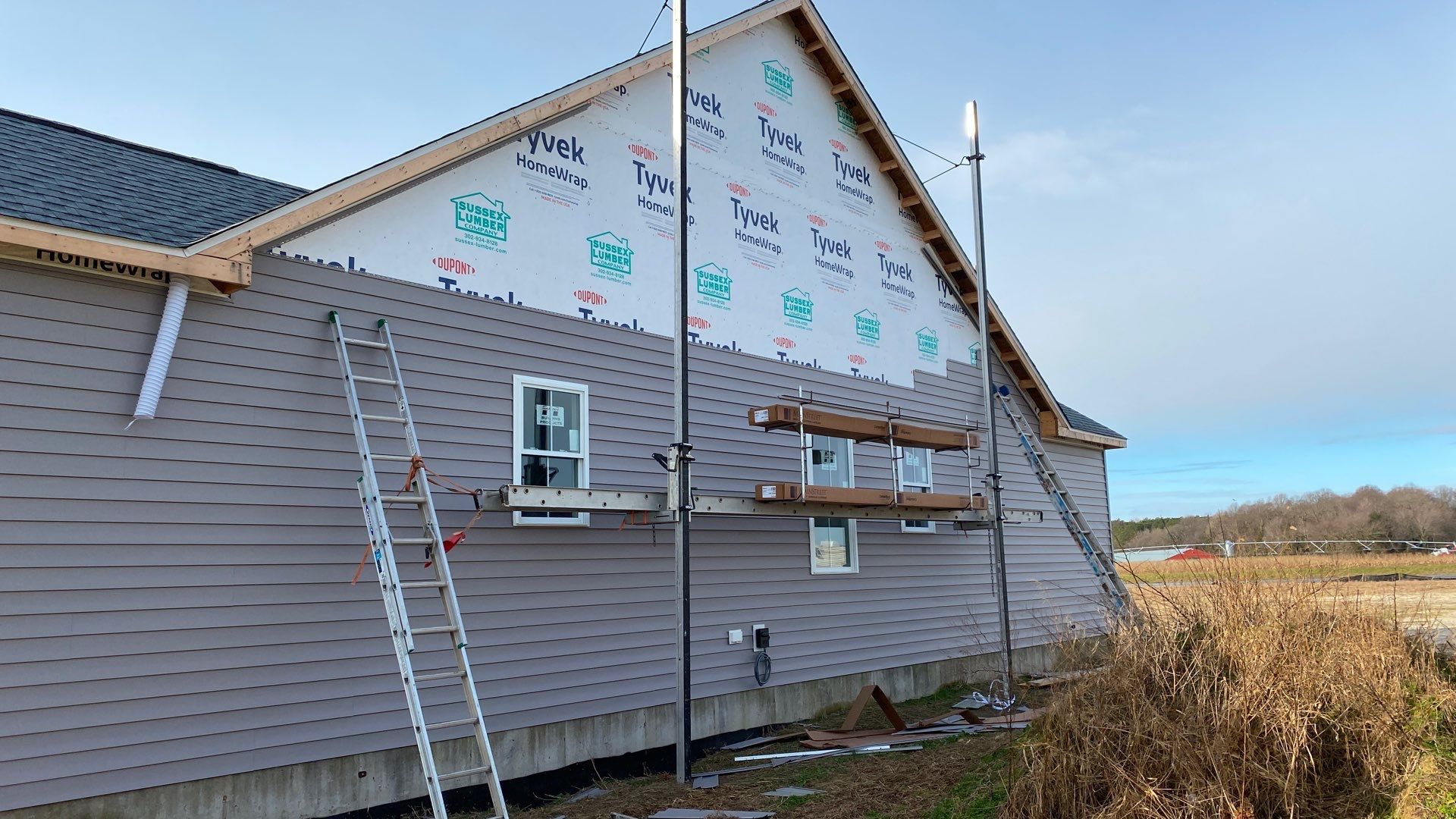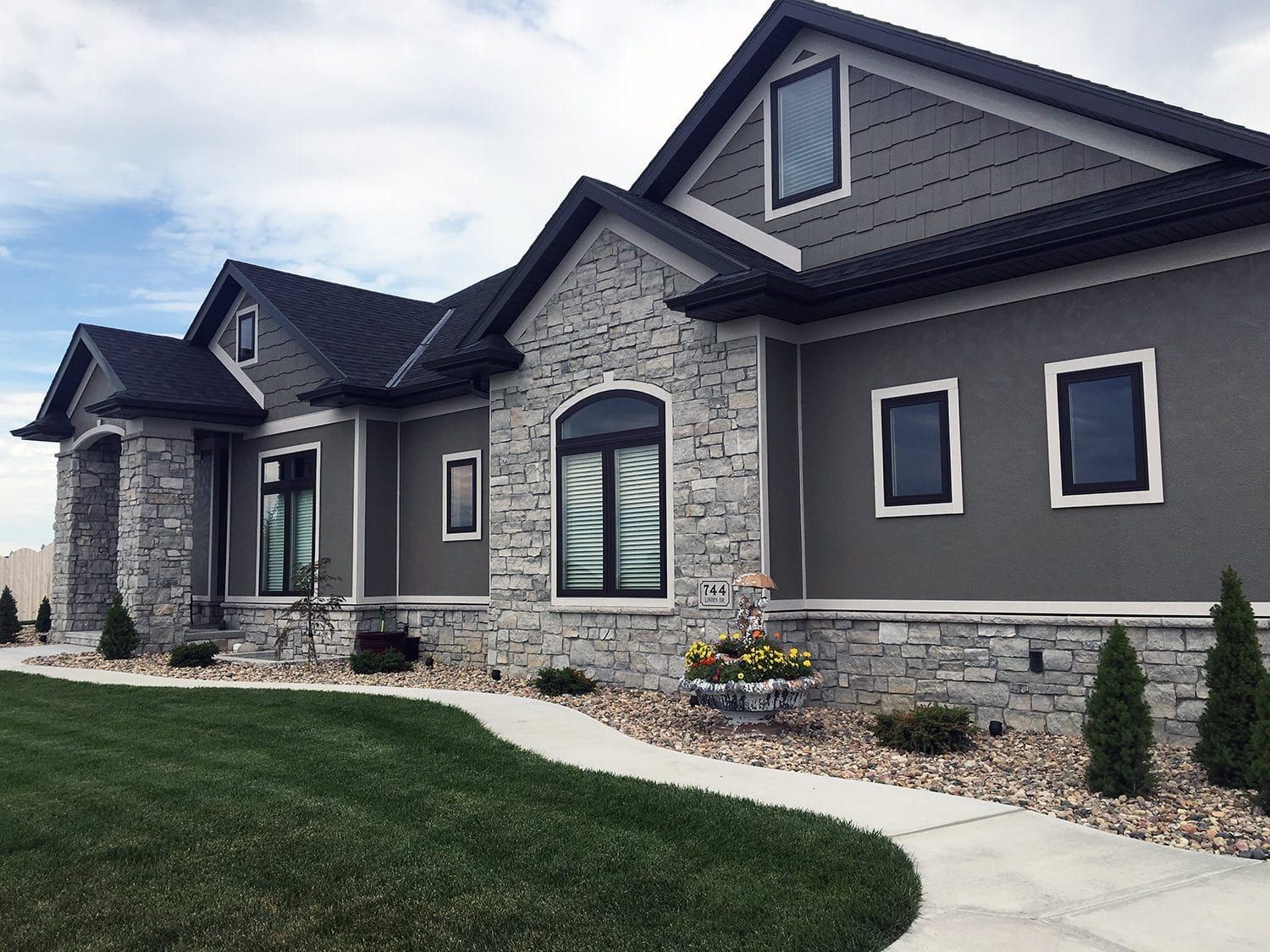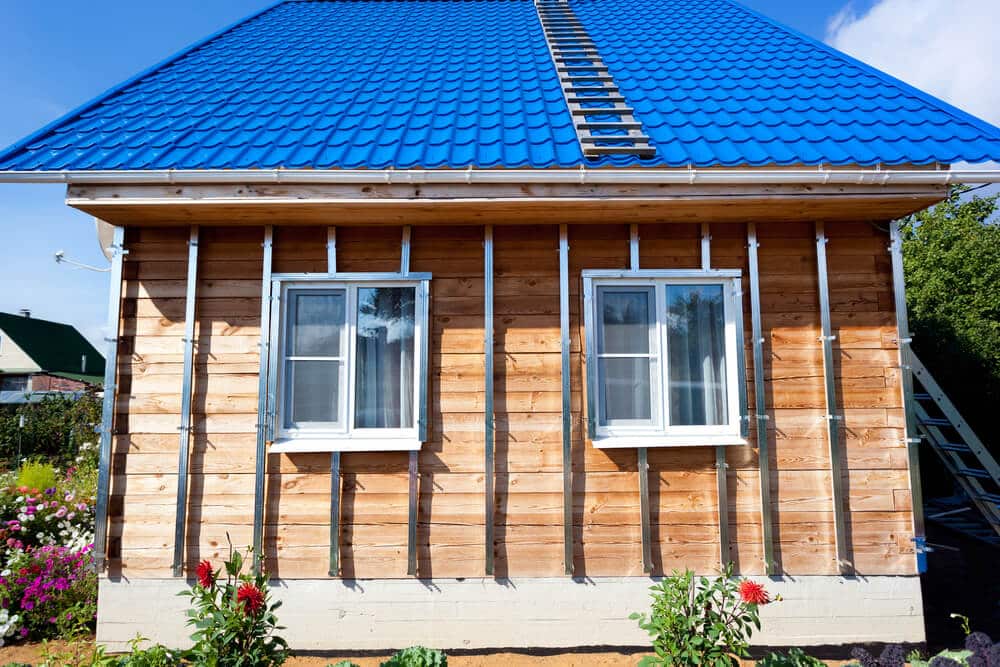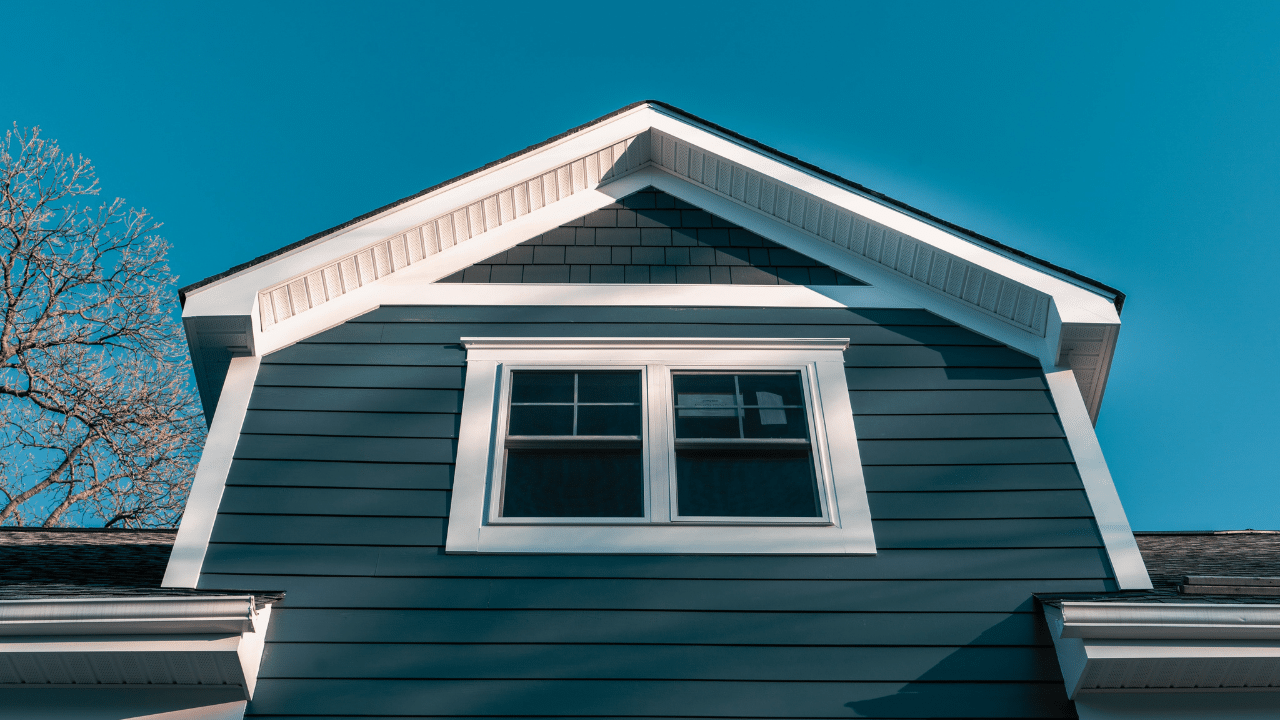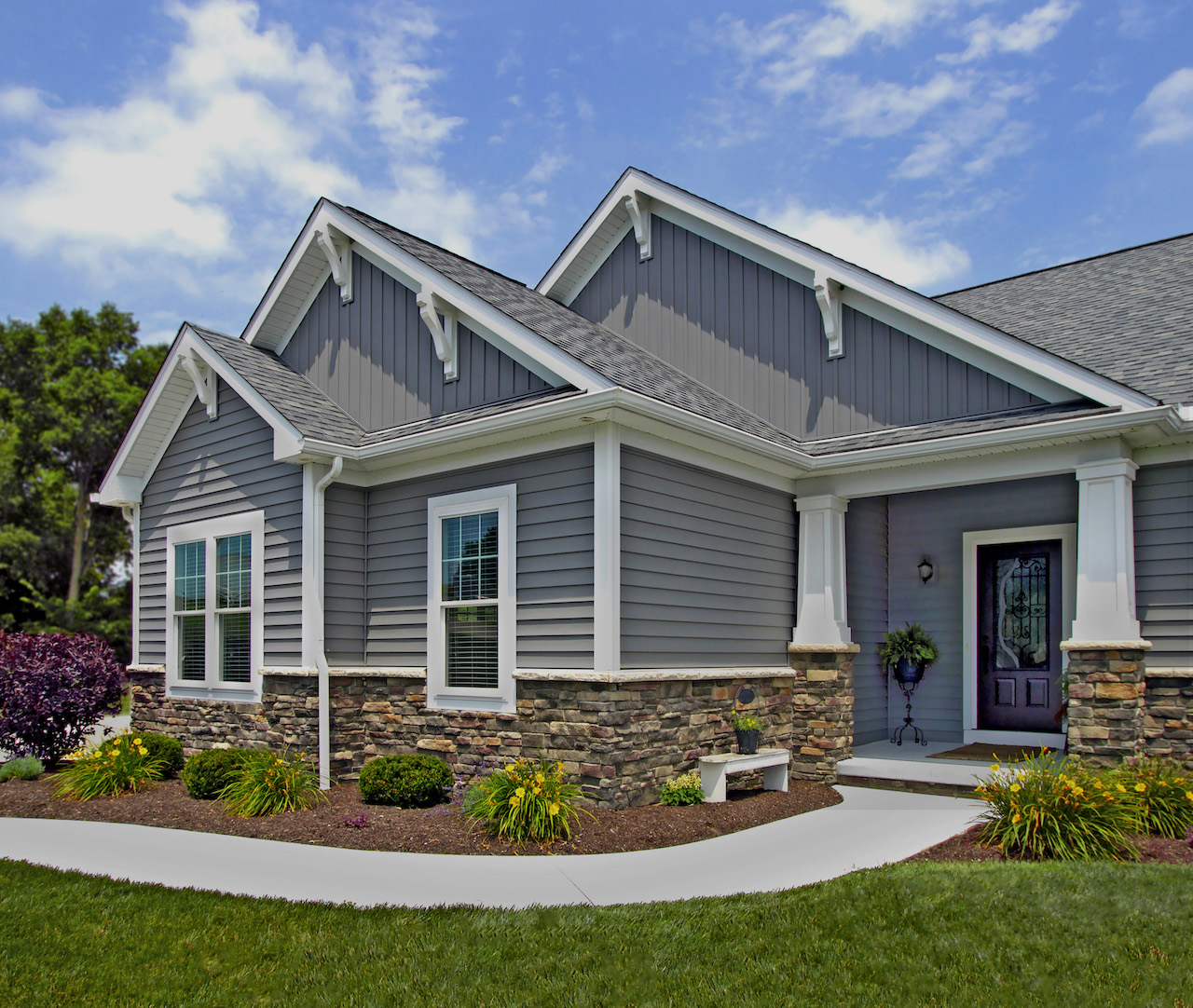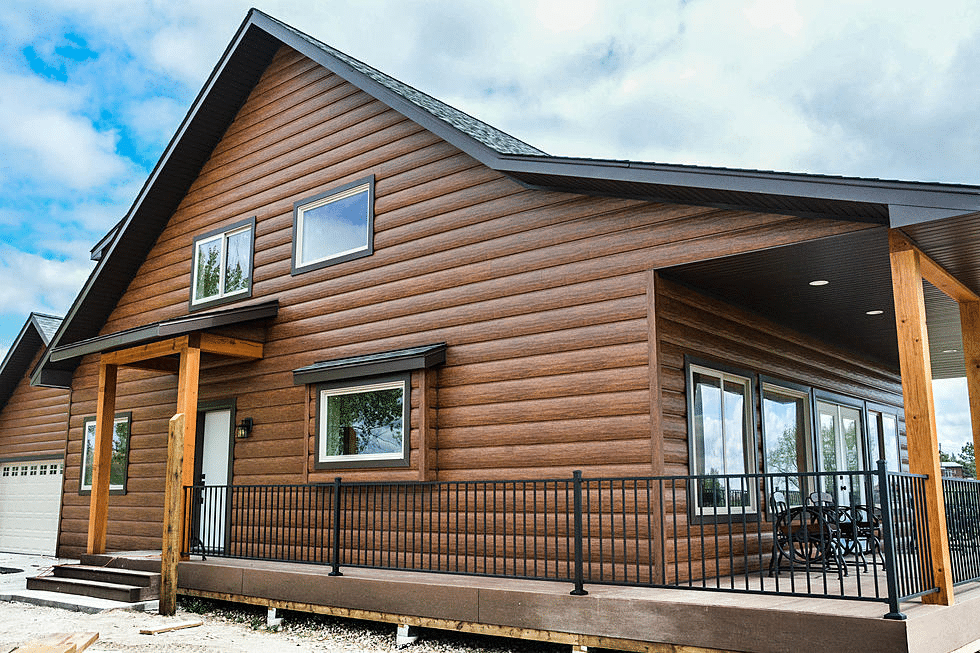Fiber Cement Insulated Siding: A Comprehensive Guide
Fiber cement insulated siding offers a compelling blend of durability, energy efficiency, and aesthetic appeal. This innovative cladding material combines the strength and longevity of fiber cement with the insulating properties of a foam core, resulting in a superior exterior wall system. We’ll explore its manufacturing, installation, maintenance, and overall value proposition, comparing it to other popular siding options and highlighting its environmental benefits.
From understanding the composition and installation process to exploring its long-term cost-effectiveness and aesthetic versatility, this guide provides a thorough overview of fiber cement insulated siding, empowering homeowners and builders to make informed decisions.
Product Overview
Fiber cement insulated siding offers a durable and energy-efficient exterior cladding solution for homes and commercial buildings. Its combination of strength, longevity, and thermal performance makes it a popular choice for homeowners and builders seeking a low-maintenance, high-performance exterior.
Fiber cement insulated siding is a composite material, blending the best properties of cement, cellulose fibers, and other additives. The manufacturing process involves mixing these components into a slurry, which is then formed into panels using various methods, often involving high-pressure molding. These panels are then cured, often under controlled temperature and humidity conditions, to achieve the desired strength and density. Finally, the panels are cut to size, and a protective finish is applied, which can vary depending on the manufacturer and desired aesthetic.
Composition and Performance
The typical composition of fiber cement insulated siding includes Portland cement, cellulose fibers (often wood pulp), silica sand, and various additives to enhance properties like water resistance, strength, and flexibility. The precise mix varies between manufacturers, leading to slight differences in performance characteristics. The high cement content contributes to its strength and durability, while the cellulose fibers provide flexibility and reduce brittleness. The addition of other components, such as polymers, further enhances its performance in areas like impact resistance and weatherability. This composite structure results in a siding that is resistant to rot, insect infestation, and fire, offering superior longevity compared to many other cladding options. The inclusion of an insulating layer within the panel further enhances its energy efficiency, reducing heat transfer and contributing to lower energy bills.
Comparison with Other Cladding Materials
Fiber cement insulated siding stands out when compared to other common exterior cladding options. The following table provides a comparison of its key features against vinyl, wood, and aluminum siding:
| Feature | Fiber Cement Insulated | Vinyl | Wood | Aluminum |
|---|---|---|---|---|
| Cost | Medium-High | Low | Medium-High to High | Medium |
| Durability | Very High (50+ years) | Medium (20-30 years) | Medium (15-25 years, varies greatly depending on wood type and maintenance) | High (30-50 years) |
| Maintenance | Low | Low | High | Low |
| Energy Efficiency | High | Medium | Low | Low |
Note: Cost estimates are relative and can vary significantly based on factors such as material quality, installation costs, and regional pricing. Durability and lifespan estimates are averages and can be affected by environmental conditions and maintenance practices.
Installation and Application
Installing fiber cement insulated siding offers a durable and energy-efficient exterior for your home. Proper installation is key to maximizing its lifespan and performance benefits. This section details the process, best practices, and necessary tools.
Successful installation hinges on meticulous preparation and precise execution. Failing to properly prepare the substrate or follow installation guidelines can lead to issues such as cracking, water damage, and reduced energy efficiency.
Substrate Preparation
Preparing the substrate is crucial for a long-lasting and aesthetically pleasing installation. This involves ensuring a clean, dry, and level surface. Any loose or damaged materials must be removed and repaired before siding installation begins.
This process typically involves cleaning the existing wall surface, removing any loose paint, debris, or damaged wood. Any significant irregularities in the wall surface should be addressed with appropriate patching and leveling compounds to ensure a smooth and even foundation for the siding. Furthermore, proper flashing and caulking around windows and doors are essential to prevent water penetration.
Installation Steps
A step-by-step approach ensures a professional and efficient installation. Consistent adherence to manufacturer’s instructions is paramount.
- Establish a Baseline: Begin by establishing a level baseline at the bottom of the wall using a chalk line or laser level. This ensures the first row of siding is perfectly aligned.
- Install Starter Strip: A starter strip, typically a metal or plastic piece, is installed along the baseline. This provides a consistent and straight edge for the first row of siding.
- Install the First Row of Siding: The first row of siding is installed, aligning it with the starter strip and securing it with appropriate fasteners according to the manufacturer’s instructions. Ensure proper spacing and alignment.
- Install Subsequent Rows: Continue installing rows of siding, ensuring proper overlap and alignment. Maintain consistent spacing and vertical alignment throughout the process.
- Cut and Fit Around Obstacles: Carefully measure and cut siding to fit around windows, doors, and other obstacles. Use appropriate tools for precise cuts and ensure a tight, weatherproof seal.
- Install Trim and Accessories: Once the siding is installed, install any necessary trim pieces, corner boards, and other accessories to complete the installation and create a finished look.
- Final Inspection: Conduct a final inspection to ensure all siding is properly installed, secured, and aligned. Address any issues before the project is considered complete.
Tools and Equipment
The right tools are essential for a smooth and efficient installation. Having everything prepared beforehand saves time and effort.
- Measuring Tape
- Level
- Chalk Line or Laser Level
- Circular Saw or Siding Shear
- Drill with appropriate drill bits
- Safety Glasses
- Work Gloves
- Caulk Gun
- Fasteners (nails or screws)
Siding Overlap and Fastening
Proper overlap and fastening techniques are critical for preventing water penetration and ensuring structural integrity.
Imagine a section of siding. Each panel should overlap the one below it by a specified amount (usually indicated by the manufacturer’s instructions, often around 1 inch). Fasteners should be driven straight into the studs or furring strips behind the siding, avoiding damage to the siding itself. The fasteners should be spaced evenly and should not be driven too close to the edges of the panel to prevent cracking. Avoid over-driving fasteners, which can cause damage. A visual representation would show two overlapping panels of siding, with evenly spaced fasteners visible, driven straight into the underlying structure, avoiding the edges of the siding. The bottom edge of the top panel completely covers the top edge of the bottom panel, providing a watertight seal.
Maintenance and Durability
Fiber cement insulated siding is a robust and long-lasting exterior cladding option, but like any building material, it requires proper maintenance to ensure its longevity and optimal performance. Regular care not only enhances its aesthetic appeal but also protects your investment and prevents costly repairs down the line.
Regular Cleaning and Maintenance of Fiber Cement Insulated Siding
Regular cleaning helps prevent the buildup of dirt, mildew, and other contaminants that can degrade the siding’s surface and affect its appearance. A simple cleaning routine can significantly extend the life of your fiber cement siding. This typically involves washing the siding with a solution of mild detergent and water using a soft-bristled brush or a pressure washer set to a low pressure setting. Avoid using abrasive cleaners or harsh chemicals, as these can damage the surface. For stubborn stains, a solution of bleach and water (always following manufacturer’s instructions for dilution) can be effective, but thorough rinsing is crucial afterwards. Annual cleaning is recommended, with more frequent cleaning in areas with high levels of pollution or exposure to harsh weather conditions.
Expected Lifespan and Factors Affecting Longevity
Fiber cement siding is known for its exceptional durability, boasting an expected lifespan of 50 years or more. However, several factors influence its longevity. Proper installation is paramount; incorrect installation can lead to premature damage. Exposure to extreme weather conditions, such as intense sun, freezing temperatures, and heavy rainfall, can also accelerate degradation. Neglecting regular maintenance, allowing dirt and mildew to accumulate, can also shorten the siding’s lifespan. Finally, the quality of the fiber cement product itself plays a role; higher-quality siding with superior manufacturing processes tends to last longer. For example, a poorly manufactured panel might crack under stress more easily than one made with higher-quality materials and a robust manufacturing process. A well-maintained home in a mild climate with properly installed high-quality siding can easily exceed the 50-year mark.
Common Problems and Solutions
While fiber cement siding is highly durable, some common problems can arise. Cracking, chipping, and fading are potential issues. Cracking can often be attributed to improper installation or impact damage. Minor cracks can sometimes be repaired with a suitable patching compound, but significant damage may require replacement of the affected panel. Chipping is usually caused by impact, and repair methods are similar to crack repair. Fading can be minimized through regular cleaning and the application of a UV-resistant sealant, which helps to protect the siding from the sun’s damaging rays. Regular inspection can help catch these issues early, allowing for timely repair and preventing more extensive damage.
Impact of Different Climates on Material Performance
Climate significantly impacts the performance of fiber cement siding. In hot and arid climates, the intense sun can lead to accelerated fading. Regular cleaning and the application of a UV-resistant sealant are particularly important in these regions. In cold and wet climates, freeze-thaw cycles can potentially damage the siding if moisture penetrates the material. Ensuring proper installation and maintenance, such as sealing any gaps or cracks, is crucial to prevent moisture intrusion. Coastal regions with high salinity levels may also require additional protection to prevent corrosion. The use of high-quality, properly installed fiber cement siding, combined with appropriate maintenance strategies tailored to the specific climate, ensures optimal performance and longevity regardless of location.
Energy Efficiency and Environmental Impact
Fiber cement insulated siding offers a compelling combination of energy efficiency and environmental responsibility, making it a smart choice for both homeowners and builders concerned about sustainability and reducing energy costs. Its unique design contributes significantly to a building’s overall thermal performance, leading to lower energy bills and a smaller carbon footprint.
Fiber cement insulated siding’s superior energy-saving capabilities stem from its construction. The core of the siding panel incorporates a layer of insulating material, typically expanded polystyrene (EPS) or polyurethane foam, sandwiched between two layers of durable fiber cement. This composite structure creates a significant thermal barrier, preventing heat transfer in both summer and winter.
Thermal Performance and R-Value
The R-value of fiber cement insulated siding varies depending on the thickness of the insulation core and the specific manufacturer. However, typical R-values range from R-8 to R-15. This means that a wall clad with this siding can significantly reduce heat loss in the winter and heat gain in the summer compared to traditional siding materials. For example, a home with R-13 insulated fiber cement siding will experience a noticeable reduction in energy consumption for heating and cooling compared to a home with standard vinyl siding which has a significantly lower R-value. This translates to substantial savings on utility bills over the lifespan of the building. The higher the R-value, the better the insulation.
Environmental Comparison of Siding Materials
Choosing building materials with minimal environmental impact is crucial for sustainable construction. The following table compares fiber cement siding to common alternatives, considering embodied carbon, recyclability, and overall sustainability. Embodied carbon refers to the greenhouse gas emissions associated with the manufacturing, transportation, and installation of the material.
| Material | Embodied Carbon (kg CO2e/m²) | Recyclability | Sustainability Considerations |
|---|---|---|---|
| Fiber Cement Siding | Estimates vary depending on manufacturing process and composition, but generally lower than vinyl and some wood options. Studies suggest a range from 50-150 kg CO2e/m². | Some components can be recycled, though the process is not always widespread. Proper disposal is important. | Durable, long-lasting, requires less frequent replacement than other materials, reducing overall lifecycle emissions. |
| Vinyl Siding | Generally higher embodied carbon than fiber cement due to the use of petroleum-based plastics. Estimates range from 150-250 kg CO2e/m². | Recycling rates are low, and often ends up in landfills. | Less durable than fiber cement, requiring more frequent replacements, leading to increased overall environmental impact. |
| Wood Siding | Embodied carbon varies greatly depending on the type of wood and its sourcing (sustainable forestry practices can significantly reduce this). Can range from 50 to over 200 kg CO2e/m². | Can be recycled or repurposed in some cases. | Susceptible to rot, insect damage, and fire, requiring more maintenance and potentially earlier replacement. |
| Aluminum Siding | High embodied carbon due to the energy-intensive aluminum production process. Estimates typically exceed 200 kg CO2e/m². | Highly recyclable, but recycling rates vary. | Durable and low-maintenance, but high initial embodied carbon remains a concern. |
Note: The embodied carbon values are estimates and can vary based on several factors, including manufacturing processes and transportation distances. The data provided represents general ranges based on available industry data and research.
Cost and Value
Fiber cement insulated siding offers a compelling blend of durability, energy efficiency, and aesthetic appeal, but the initial investment is a significant consideration for homeowners. Understanding the total cost, factoring in both materials and labor, and comparing it to the long-term value and potential return on investment (ROI) against other siding options is crucial for making an informed decision. This section breaks down the cost factors and explores the long-term financial benefits of choosing fiber cement insulated siding.
The total cost of fiber cement insulated siding installation varies significantly based on several factors. These include the size of the house, the complexity of the installation (e.g., requiring extensive repairs or intricate detailing), the chosen style and finish of the siding, regional labor costs, and the cost of materials themselves. While obtaining precise figures requires a professional estimate tailored to a specific project, a general understanding of the cost components can help homeowners budget effectively.
Cost Breakdown of Fiber Cement Insulated Siding Installation
A detailed breakdown of the cost typically includes materials and labor. Material costs encompass the siding panels themselves, any necessary trim pieces, fasteners, and underlayment. Labor costs depend on the installer’s experience, the project’s complexity, and prevailing local wage rates. For a typical 2,000 square foot home, material costs might range from $10,000 to $20,000, while labor could add another $5,000 to $15,000. This results in a total cost range of $15,000 to $35,000, but it’s important to remember this is a broad estimate. A professional consultation is essential for accurate cost projection.
Long-Term Value Proposition
While the upfront cost of fiber cement insulated siding is higher than some alternatives like vinyl, its longevity and energy efficiency contribute to substantial long-term value. The exceptional durability of fiber cement translates to minimal maintenance and repair needs over its lifespan, which can easily exceed 50 years. This extended lifespan significantly reduces the overall cost of homeownership compared to siding materials that require more frequent replacement, such as vinyl or aluminum.
Return on Investment (ROI) Compared to Other Siding Options
Comparing the ROI of fiber cement insulated siding to other options requires considering factors beyond initial cost. While vinyl siding might have a lower upfront cost, its shorter lifespan (typically 15-20 years) necessitates more frequent replacements, increasing the overall cost over time. Wood siding, though aesthetically pleasing, demands regular maintenance (painting, staining, repairs) which adds to its long-term cost. Fiber cement’s superior durability and energy efficiency, resulting in lower energy bills, often lead to a higher ROI over the long term. For instance, a homeowner might save several thousand dollars on energy costs over 20 years, significantly offsetting the higher initial investment. Furthermore, increased home value due to the improved aesthetics and durability of fiber cement siding is another key factor to consider when assessing ROI.
Aesthetic Considerations
Fiber cement insulated siding offers a compelling blend of durability and aesthetic appeal, providing homeowners with a wide range of options to enhance their home’s curb appeal and complement their architectural style. The versatility of this material allows for seamless integration with various design elements, resulting in a visually stunning and long-lasting exterior.
Fiber cement siding’s aesthetic versatility stems from its ability to mimic the look of other materials while offering superior performance. The range of colors, textures, and styles available allows for considerable customization, ensuring a perfect match for any home’s design.
Available Colors, Textures, and Styles
The color palette for fiber cement siding is extensive, ranging from classic neutrals like white, beige, and gray to bolder hues like deep blues, reds, and greens. Many manufacturers offer a wide spectrum of shades within these color families, allowing for subtle variations to match specific design preferences. Textures also vary considerably, from smooth finishes that resemble stucco to deeply textured surfaces that replicate the look of wood clapboard or even natural stone. Styles are equally diverse, encompassing traditional lap siding, vertical planks, and even more contemporary designs with varied panel widths and profiles. This allows for the creation of unique and visually interesting facades.
Fiber Cement Siding and Architectural Styles
Fiber cement siding’s adaptability makes it a suitable choice for a variety of architectural styles. Its ability to mimic other materials allows for seamless integration into existing designs while offering enhanced durability.
For a classic Colonial home, a smooth, off-white fiber cement siding with traditional lap profiles would create a timeless and elegant look. The clean lines and subtle texture would complement the home’s architectural details, enhancing its overall charm.
A contemporary home might benefit from a sleek, modern look achieved with large-format fiber cement panels in a dark gray or charcoal color. The clean lines and minimal texture would create a sophisticated and understated aesthetic, perfectly suited to the home’s contemporary design.
For a rustic farmhouse, a textured fiber cement siding that replicates the look of wood clapboard, perhaps in a warm brown or gray tone, would create a cozy and inviting atmosphere. The rustic texture would complement the home’s natural surroundings, creating a sense of harmony between the house and its environment.
Customization and Integration with Other Materials
Fiber cement siding can be customized to a high degree, allowing for the integration of other building materials to create unique and visually appealing exteriors. For example, fiber cement panels can be combined with stone accents around windows and doorways, or with wood trim to create visual interest and contrast. The use of different panel widths and profiles also allows for the creation of custom designs that are tailored to the specific needs and preferences of the homeowner. The ability to paint fiber cement siding also provides additional opportunities for customization, allowing homeowners to choose colors that complement their landscaping and overall aesthetic vision.
Summary
Fiber cement insulated siding emerges as a strong contender in the exterior cladding market, balancing performance, aesthetics, and sustainability. Its superior durability, energy efficiency, and relatively low maintenance requirements contribute to a significant long-term return on investment. Whether you’re prioritizing energy savings, minimizing environmental impact, or seeking a visually striking exterior, fiber cement insulated siding warrants serious consideration. The information presented here should equip you to make an informed decision about this versatile and high-performing building material.



